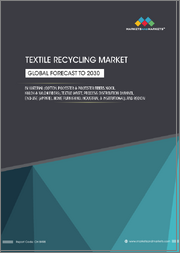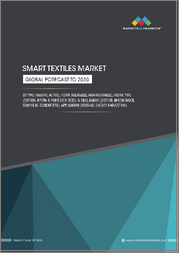
|
시장보고서
상품코드
1621748
나일론 모노필라멘트 시장 기회, 성장 촉진요인, 산업 동향 분석 및 예측(2024-2032년)Nylon Monofilament Market Opportunity, Growth Drivers, Industry Trend Analysis, and Forecast 2024 - 2032 |
||||||
세계 나일론 모노필라멘트 시장은 2023년 14억 달러 규모에 달했고, 2024년부터 2032년까지 연평균 5.2%의 성장률을 나타낼 것으로 전망됩니다.
이 단일 연선 나일론 섬유는 뛰어난 강도, 유연성 및 내마모성으로 유명하며, 다양한 산업 분야에 걸쳐 다양한 용도에 적합합니다. 주요 용도는 어망, 의료기기, 스포츠 용품 등입니다. 나일론 모노필라멘트에 대한 수요 증가는 효율적인 운영을 위해 내구성이 뛰어나고 가벼운 소재를 필요로 하는 어업 및 양식업 부문의 확대가 큰 원동력이 되고 있습니다. 또한, 레크리에이션 활동, 특히 어업에 대한 관심이 높아지면서 신뢰할 수 있는 낚시 장비에 대한 수요가 증가하여 나일론 모노필라멘트 시장을 더욱 촉진하고 있습니다.
의료 분야에서는 우수한 기계적 특성과 생체적합성으로 인해 이 소재가 수술기구에 점점 더 많이 사용되고 있습니다. 어업과 양식업의 호황, 레크리에이션 및 스포츠의 부상, 의료용도의 발전 등의 요인은 나일론 모노필라멘트 시장의 큰 잠재력을 뒷받침하고 있습니다. 나일론 모노필라멘트 시장은 유형별로 나일론6, 나일론66, 기타로 분류됩니다. 현재 나일론6가 가장 큰 시장 점유율을 차지하고 있으며, 2023년에는 6억 6,050만 달러의 수익을 창출할 것으로 예상됩니다. 특히 어망, 의료기기 등 다양한 분야에서 널리 사용되는 범용성과 다양한 분야에서 널리 사용되고 있는 것이 그 이유 중 하나입니다.
높은 인장 강도, 탄성 및 내마모성으로 유명한 나일론 6는 많은 응용 분야에서 선호됩니다. 반대로 나일론 66은 내마모성이 우수하고 융점이 높아 까다로운 용도에 적합한 것으로 알려져 있습니다. 그러나 높은 제조 비용으로 인해 나일론 6에 비해 시장 점유율이 적습니다.
| 시장 범위 | |
|---|---|
| 시작 연도 | 2023년 |
| 예측 연도 | 2024년-2032년 |
| 시작 금액 | 1.4억 달러 |
| 예상 금액 | 2.2억 달러 |
| CAGR | 5.2% |
용도별로는 어망, 의료기기, 봉제사, 스포츠 용품 등이 있습니다. 어망만이 시장 점유율의 34.7%를 차지하고 있는데, 이는 상업용 어업과 레저용 어업 모두에서 수요가 증가하고 있기 때문입니다.
이 부문에서 나일론 모노필라멘트가 선호되는 이유는 강도와 유연성 때문입니다. 나일론 모노필라멘트는 어망뿐만 아니라 의료 부문에서도 다양한 의료 제품에 사용되고 있으며, 섬유 산업에서도 재봉사에 대한 수요가 증가하고 있습니다. 미국의 나일론 모노필라멘트 시장은 의료 및 자동차 산업 등 다양한 부문의 응용 분야에 힘입어 성장할 것으로 예상되며, 2023년 시장 규모는 2억 7,670만 달러에 달할 것으로 예상되며, 미국은 탄탄한 산업 기반, 첨단 기술 및 다양한 산업 분야의 높은 수요로 북미 시장을 선도하고 있습니다.
이 시장은 다양한 응용 분야에서의 기술 혁신과 지속 가능한 생산 관행으로의 전환에 힘입어 꾸준한 성장이 예상됩니다. 미국이 우위를 점하고 있는 가운데, 캐나다에서는 특히 의료 및 항공우주 부문 수요가 증가하고 있으며, 이는 북미 전체 성장에 기여하고 있습니다.
목차
제1장 조사 방법과 조사 범위
제2장 주요 요약
제3장 산업 인사이트
- 생태계 분석
- 밸류체인에 영향을 미치는 요인
- 이익률 분석
- 변혁
- 향후 전망
- 제조업체
- 유통업체
- 공급업체 상황
- 이익률 분석
- 주요 뉴스
- 규제 상황
- 영향요인
- 성장 촉진요인
- 어업과 수산양식 수요 증가
- 스포츠나 레크리에이션 활동 성장
- 의료용도 확대
- 산업 잠재적 리스크와 과제
- 원료 가격 변동
- 폐기 문제에 의한 환경에 대한 영향
- 성장 촉진요인
- 성장 가능성 분석
- Porter's Five Forces 분석
- PESTEL 분석
제4장 경쟁 구도
- 서론
- 기업 점유율 분석
- 경쟁 포지셔닝 매트릭스
- 전략 전망 매트릭스
제5장 시장 규모와 예측 : 유형별, 2021-2032년
- 주요 동향
- 나일론 6
- 나일론 66
- 기타(나일론 6 10, 나일론 6 12, 나일론 11, 나일론 12 등)
제6장 시장 규모와 예측 : 용도별, 2021-2032년
- 주요 동향
- 어망
- 의료기기
- 봉제사
- 브러쉬
- 스포츠 용품
- 기타(로프, 작물 지지 넷 등)
제7장 시장 규모와 예측 : 지역별, 2021-2032년
- 주요 동향
- 북미
- 미국
- 캐나다
- 유럽
- 영국
- 독일
- 프랑스
- 이탈리아
- 스페인
- 러시아
- 아시아태평양
- 중국
- 인도
- 일본
- 한국
- 호주
- 라틴아메리카
- 브라질
- 멕시코
- 중동 및 아프리카
- 남아프리카공화국
- 사우디아라비아
- 아랍에미리트
제8장 기업 개요
- AdvanSix
- BASF SE
- Contifibre
- Huafon Group
- Hyosung
- JCT Limited
- Kolon Industries
- Nurel
- NYCOA
- SK Chemicals
- Solvay
- Suzhou Hanyun New Material Technology
- Toray Industries
The Global Nylon Monofilament Market reached a valuation of USD 1.4 billion in 2023 and is projected to grow at a CAGR of 5.2% from 2024 to 2032. This single-strand nylon fiber is known for its remarkable strength, flexibility, and resistance to wear, making it suitable for various applications across multiple industries. Its primary uses include fishing nets, medical devices, and sporting goods. The rising demand for nylon monofilament is significantly driven by the expanding fishing and aquaculture sectors, which require durable and lightweight materials for efficient operation. Additionally, the growing interest in recreational activities, particularly fishing, has heightened the demand for dependable fishing gear, further propelling the market for nylon monofilament.
In the healthcare field, the material is increasingly utilized in surgical devices due to its favorable mechanical properties and biocompatibility. Factors such as the booming fishing and aquaculture industries, the rise of recreational sports, and advancements in medical applications underline the substantial potential of the nylon monofilament market. The market is categorized by type into nylon 6, nylon 66, and others. Nylon 6 currently holds a significant market share, generating USD 660.5 million in revenue in 2023. Its versatility and widespread application across various sectors, especially in fishing nets and medical devices, contribute to its dominance.
Renowned for its high tensile strength, elasticity, and abrasion resistance, nylon 6 is a favored choice in many applications. Conversely, Nylon 66 serves as a close competitor, known for its enhanced wear resistance and higher melting point, making it suitable for demanding applications. However, due to higher production costs, it holds a smaller share of the market compared to nylon 6.
| Market Scope | |
|---|---|
| Start Year | 2023 |
| Forecast Year | 2024-2032 |
| Start Value | $1.4 Billion |
| Forecast Value | $2.2 Billion |
| CAGR | 5.2% |
In terms of applications, the market includes segments like fishing nets, medical devices, sewing threads, and sports equipment. Fishing nets alone account for 34.7% of the market share, driven by the increasing need for both commercial and recreational fishing activities.
The preference for nylon monofilament in this segment stems from its strength and flexibility. Beyond fishing nets, the healthcare sector relies on nylon monofilament for various medical products, and the textile industry also exhibits rising demand for sewing threads. The U.S. nylon monofilament market is poised for growth, driven by applications in diverse sectors, including medical and automotive industries. Valued at USD 276.7 million in 2023, the U.S. leads North America due to its robust industrial base, advanced technology, and high demand across multiple industries.
The market is expected to experience steady growth, supported by innovations in various applications and a shift towards sustainable production practices. While the U.S. dominates, Canada is witnessing increased demand, particularly in medical and aerospace sectors, contributing to North America's overall growth in this area.
Table of Contents
Chapter 1 Methodology & Scope
- 1.1 Market scope & definition
- 1.2 Base estimates & calculations
- 1.3 Forecast calculation
- 1.4 Data sources
- 1.4.1 Primary
- 1.4.2 Secondary
- 1.4.2.1 Paid sources
- 1.4.2.2 Public sources
Chapter 2 Executive Summary
- 2.1 Industry synopsis, 2021-2023
Chapter 3 Industry Insights
- 3.1 Industry ecosystem analysis
- 3.1.1 Factor affecting the value chain
- 3.1.2 Profit margin analysis
- 3.1.3 Disruptions
- 3.1.4 Future outlook
- 3.1.5 Manufacturers
- 3.1.6 Distributors
- 3.2 Supplier landscape
- 3.3 Profit margin analysis
- 3.4 Key news & initiatives
- 3.5 Regulatory landscape
- 3.6 Impact forces
- 3.6.1 Growth drivers
- 3.6.1.1 Increasing demand for fishing and aquaculture
- 3.6.1.2 Growth in sports and recreational activities
- 3.6.1.3 Expansion of medical applications
- 3.6.2 Industry pitfalls & challenges
- 3.6.2.1 Volatility in raw material prices
- 3.6.2.2 Environmental impact due to disposal issues
- 3.6.1 Growth drivers
- 3.7 Growth potential analysis
- 3.8 Porter's analysis
- 3.9 PESTEL analysis
Chapter 4 Competitive Landscape, 2023
- 4.1 Introduction
- 4.2 Company market share analysis
- 4.3 Competitive positioning matrix
- 4.4 Strategic outlook matrix
Chapter 5 Market Size and Forecast, By Type, 2021-2032 (USD Billion) (Kilo Tons)
- 5.1 Key trends
- 5.2 Nylon 6
- 5.3 Nylon 66
- 5.4 Others (nylon 6 10, nylon 6 12, nylon 11, and nylon 12, etc.)
Chapter 6 Market Size and Forecast, By Application, 2021-2032 (USD Billion) (Kilo Tons)
- 6.1 Key trends
- 6.2 Fishing nets
- 6.3 Medical devices
- 6.4 Sewing threads
- 6.5 Brushes
- 6.6 Sports equipment
- 6.7 Other (ropes, crop support nets, etc.)
Chapter 7 Market Size and Forecast, By Region, 2021-2032 (USD Billion) (Kilo Tons)
- 7.1 Key trends
- 7.2 North America
- 7.2.1 U.S.
- 7.2.2 Canada
- 7.3 Europe
- 7.3.1 UK
- 7.3.2 Germany
- 7.3.3 France
- 7.3.4 Italy
- 7.3.5 Spain
- 7.3.6 Russia
- 7.4 Asia Pacific
- 7.4.1 China
- 7.4.2 India
- 7.4.3 Japan
- 7.4.4 South Korea
- 7.4.5 Australia
- 7.5 Latin America
- 7.5.1 Brazil
- 7.5.2 Mexico
- 7.6 MEA
- 7.6.1 South Africa
- 7.6.2 Saudi Arabia
- 7.6.3 UAE
Chapter 8 Company Profiles
- 8.1 AdvanSix
- 8.2 BASF SE
- 8.3 Contifibre
- 8.4 Huafon Group
- 8.5 Hyosung
- 8.6 JCT Limited
- 8.7 Kolon Industries
- 8.8 Nurel
- 8.9 NYCOA
- 8.10 SK Chemicals
- 8.11 Solvay
- 8.12 Suzhou Hanyun New Material Technology
- 8.13 Toray Industries



















